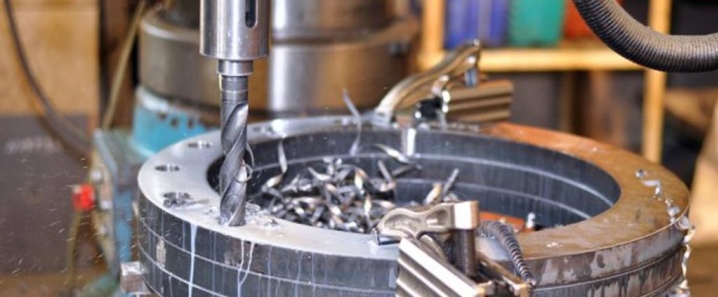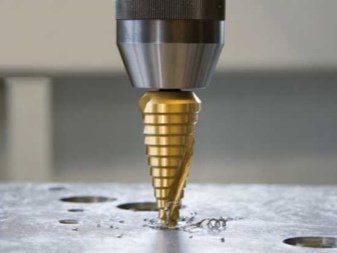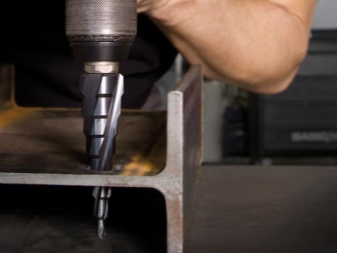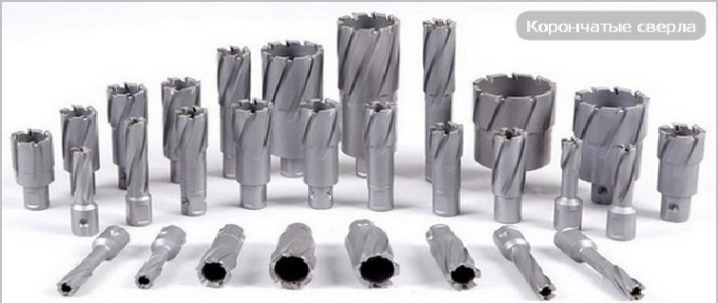Overview and use of stainless steel drills

Drilling stainless steel yourself is completely easy, especially if you use special drills for this. With the right tools, you can drill the holes you need quickly and with high quality. And you can also improve the process by using different compositions for cooling.


Peculiarities
The drill bit for stainless steel must be correctly matched. Not so long ago, cobalt cylindrical drills were used for this. On the modern market there are a huge number of drilling tools made of various metals that do an excellent job with any metal, including stainless steel. Moreover, there are both domestic and imported models among them. Of course, it is worth noting that the best of them have a cobalt content, and it is at least 5%.
In addition to the composition of the drill, the edge angle is also important.
For example, hard metal tools with a sharp one-sided edge are ideal for stainless steel. However, they are quite expensive and not easy to find.


For steel, it is worth choosing drills depending on its thickness. For example, for sheets with a thickness of 6 millimeters and more, it is better to take not one, but 2 drills. First, a hole is made with a smaller tool, and then a drill of the required diameter is applied.
For thin steel, the most common drills are suitable, but only tool revolutions should be 100 or less per minute. It is important that the edge of the drill is sharpened at a specific angle. For stainless steel that is less than a millimeter thick, it is worth using stepped gimbals.
Thanks to them, the holes will be round, without any flaws.


What are they?
According to the materials from which the drills are made, several classes of products are distinguished.
- Tool steel drills with an edge reinforced with a high hardness plate. The main difference is low cost.
- Metal drills with cobalt additives or pure cobalt. Best suited for drilling in hard metal alloys, as they tolerate high temperatures and heavy workloads.
- Titanium tools are similar in strength to cobalt ones. Perfect for working with a variety of steels and alloys. They can keep the original sharpening for a long time.
- HSS drills perform well their functions and are distinguished by an acceptable cost. However, it should be borne in mind that sharpening quickly leaves them. Especially if operating temperatures have been exceeded.


When choosing drills, it is also important to consider that there are various models that differ in their shape.
- Classic a kind are considered step drills that have a cylindrical shape. They are used most often for drilling holes in metal sheets. As a rule, for their manufacture, steel with the HSS marking is used, which has increased strength and durability.

- Conical The drill is manufactured with a conical cutting edge. It is often also called stepwise. It is best chosen for drilling in thin metals and for correcting imperfections from improper cutting.

- Cutting crown or annular the tool is in the form of a cylinder, which has a cutting edge. The contact area of such a drill with a sheet of metal is small, which reduces the energy consumption for drilling. And also such a tool is suitable for making large holes without losing the quality of the edges.

- Flat drills with working edges that can change are called feathers. They are used for making very even or large holes. Among the advantages, it is worth noting the low cost without loss of quality.

- Gray - means that metal drills have not been subjected to any processing. These tools are often disposable.
- Black the color is obtained if the metal has been treated with steam at a high temperature. This gives the products increased strength, allows them to cope well with cyclic heating and cooling, and also retains their original sharpening for a long time.
- Dark golden drills are tempered (normalized), which increases their strength by reducing internal stresses. These tools are suitable for drilling in very strong metals and carbide alloys.
- Bright gold color indicates the addition of titanium to the metal. Such drills are fully consistent with their high price and do an excellent job even with very difficult tasks.

By the length of the drill, it is customary to divide into 3 types.
- Drills with a length of 56 to 254 mm are called long. Their diameter is usually between 1 and 20 mm.
- Elongated can be from 0.3 to 20 mm in diameter. Moreover, their minimum length is 19 mm, and the maximum is 205 mm.
- The length of short tools varies between 20-131 mm, and the diameter is completely similar to the diameter of the elongated ones.

Marking
To determine the type of metal from which the drill is made, it is customary to use markings. The only gimbals on which the brand is not placed are spiral ones with a diameter of less than 2 millimeters.
Knowing the marking of the tool, you can easily understand for which surfaces it is suitable.
In that case, if the drill is made of high speed steel, the designation in the form of the letter P will be visible on it. If the composition contains 9% tungsten, then P9 will be applied. In the presence of cobalt up to 15%, the P9K15 marker is applied. If, in addition to cobalt, tungsten and molybdenum are also present in the steel, then the designation will be P6M5K5.

Imported drills are marked with HSS. A letter can be added to it, by which it is easy to understand which metal is alloying in the drill. For example, with cobalt, the letter E will be present, which is good for working with tough metals. It is customary to mark titanium-coated drills with HSS-Tin - they are characterized by increased hardness and high temperature resistance.
For stainless metals, drills with the HSS-E VAP marker are used, and for aluminum with HSS-4241. Drills with the designation HSS-R are distinguished by the maximum strength.

How to drill?
Drilling a hole in a material such as stainless steel is not difficult if the right tools are selected and all the details of the technology are studied in advance. The main difference when drilling holes in stainless metal is the mandatory use of special compounds. Most often, a product is used that contains sulfur and engine oil. In this case, you can take various types of sulfur, including colloidal or any other. It is worth clarifying that coarse sulfur must be pre-crushed before adding oil.
It is very effective when working with stainless metal to use a cooling compound, which is obtained from sulfur and fatty acids. Moreover, suitable acids can be made independently. For example, laundry soap should be crushed, mixed with hot water, and then technical acid (hydrochloric) should be added.
The necessary acids will accumulate on the surface of the composition. To extract them, a large amount of chilled water is added to the composition, under the influence of which the acids will harden.


The resulting acids are combined with sulfur in a ratio of 1 to 6. This composition makes it easy to drill a hole in stainless steel of absolutely any thickness. When working with a drill with horizontal planes, it is necessary to pour a cooling solution into a cork or rubber washer and perform the drilling process through it. For vertical surfaces, it is recommended to attach wax balls in place of future holes.
When working with an electric drill or drilling machine, you must set the minimum speed. Otherwise, no compound will properly cool the instrument. Even if you cannot set the desired speed on the drill using a special regulator, you can start the tool for just a few seconds.


For information on how to drill stainless steel, see the next video.













The comment was sent successfully.